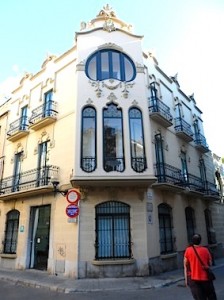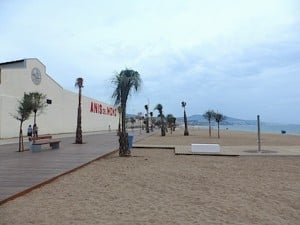La Rambla, Palau Güell and Sagrada Familia may be ‘must sees’ for your clients visiting Barcelona city centre, but there is so much more for them to see and enjoy in Barcelona Province – just a 20-30 minute and €2.00 train ride away, reports Neil Steedman.

Some 35km south-west of Barcelona is the fishing village of Sitges, popular with Spanish holidaymakers, overseas tourists and LGBT travellers alike, with its blue and white houses, lovely beach and promenade, and majestic late-9th-century colonial-style homes built by wealthy emigrants returning from the Caribbean and the Americas (www.sitgestur.cat).
One of these was Facundo Bacardí Massó and a tour of Casa Bacardí includes a lesson from a professional bartender on the best way to make a mohito – and it tastes fantastic (www.casabacardi.es)!

Between Sitges and Barcelona lies Baix Llobregat and Colònia Güell (www.gaudicoloniaguell.org), an industrial textile village designed in 1890 for Eusebi Güell by Antoni Gaudí. His unfinished church (funding was withdrawn in 1914) is a fascinating study in natural architecture and the use of catenary arches, hyperbolic parabolas and broken mosaic tiling that Gaudi was to employ so successfully in later works.

Discovered in 1975 and officially opened in 2007, the Gavà Prehistoric Mines Archaeological Park contains the oldest gallery of mines in Europe, 20 metres deep, where Neolithic man began excavating the green mineral, variscite, 6,000 years ago to make turquoise jewellery and did so for over 1,000 years (www.parcarqueologic.cat).
Moving inland (30 minutes from Sitges or 50 minutes from Barcelona), the Penedès region is wine and cava country. A visit to (or a stay at) Ramón and Monti Parera’s organic Pardas winery in Torrelavit brings a guided tour and tasting of wines, including their Xarel.lo and Pardas Criança white and red Aspriu (www.enoturismepenedes.cat).
The Costa is equally interesting north of Barcelona. The Ruta Modernista (www.diba.cat/turismo) includes villages such as Canet de Mar, Mataró and Argentona, with Modernista buildings by leading architects of Catalan Art Nouveau, Lluís Domènech i Montaner and Josep Puig i Cadafalch.
In Caldes d’Estrac the Palau Foundation (www.fundaciopalau.cat) displays the collection of Josep Palau i Fabre, personal friend of Pablo Picasso, which complements that of the Museu Picasso in Barcelona.
An absolute ‘must visit’ in the Maresme region is Badalona’s Roman Museum (www.museudebadalona.cat), which displays the 1st-century BC baths, homes and shops of the ancient city of Baetulo.

Also in Badalona, the Anís del Mono factory (www.museudebadalona.cat/visites-anis.php), founded by brothers José and Vicente Bosch in 1868, reveals the production process followed to obtain the Anís del Mono for over 130 years.




